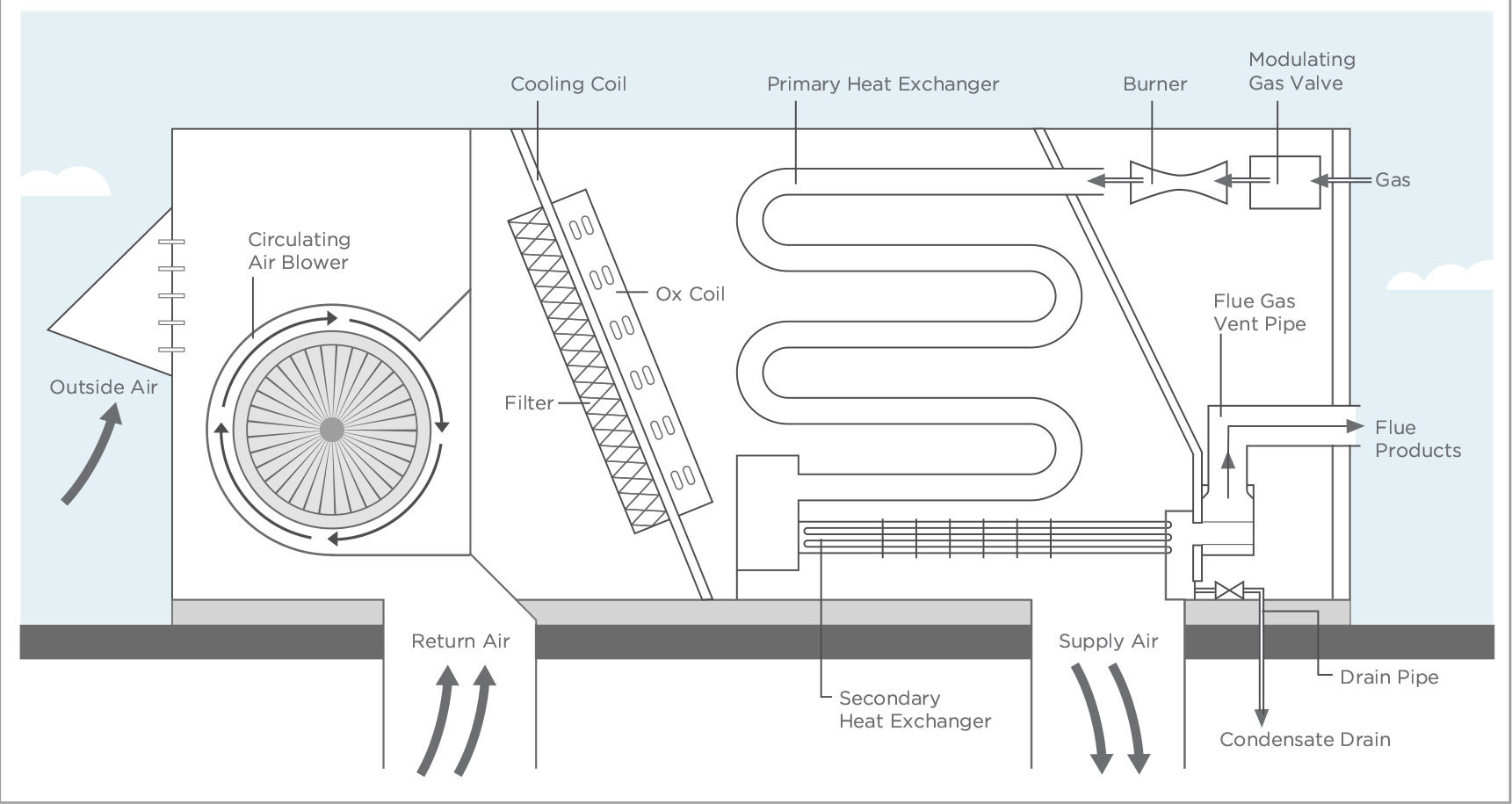Combining the Financial and Energy Benefits of Rooftop Units and Condensing Gas Furnaces
Rooftop units (RTUs)—HVAC appliances installed on building roofs—are commonly used in commercial applications due to their inherent convenience: RTUs package heating and cooling equipment together in a space that doesn’t take up precious real estate and is still accessible to technicians.
Condensing gas furnaces have recently entered the commercial RTU market, providing the benefits of non-condensing RTUs at much higher efficiency levels and lower operating costs. In fact, condensing furnaces can achieve over 90 percent AFUE*—a big upgrade when compared to traditional gas furnaces that range between 78- and 82-percent AFUE. Condensing rooftop units (C-RTUs) work similarly to traditional gas RTUs with one crucial difference: the condensing systems use a secondary heat exchanger to extract heat from the flue gases—heat that would have otherwise been lost.
C-RTUs are optimal for commercial buildings with high outside air usage, such as facilities that use dedicated outside air systems (DOAS) or make-up air units (MUA). They’re also especially effective in buildings with extended runtime cycles and relatively few service zones—e.g., retail big box and mall outlets, schools, sports arenas, theaters, medical/healthcare facilities and daycares.

Harnessing Otherwise Lost Thermal Energy
Condensing secondary heat exchanger
Traditional gas RTUs heat the air supplied to the building
through a heat exchanger—a device that transfers heat
from combustion gases to fresh air before it’s delivered to
the building. A C-RTU furnace achieves higher efficiency
levels by using a secondary heat exchanger that captures
additional heat from the exhaust gases before they are
expelled. The efficiency gain during this phase is a result
of the flue gas changing to a liquid upon cooling, also
known as the latent heat of vaporization.
Condensate management
As the gasses coming out of the C-RTU’s secondary heat
exchanger cool down, they condense to form water and
carbon dioxide, which together form carbonic acid. This
condensate flows out through a drain pipe, and a plastic
PVC pipe vents the remaining low temperature flue gases
to the outdoors.
Because of this process, C-RTUs require considerations
for piping, pumps, neutralizers and freeze prevention.
Properly installing and maintaining condensate disposal
equipment will ensure that customers achieve all the
benefits of high-efficiency condensing furnaces.

Other efficient features of C-RTUs
- Modulating and two-stage combustion:
To ensure the system efficiently meets the building load requirements, condensing furnaces use either modulating or two-stage combustion. The latter is a system with two levels of heat output for colder vs. milder weather. - Electric blower motor:
Condensing furnaces use a variable-speed, direct-current electronically commutating motor (ECM) which is more energy-efficient than a standard motor. - Blower compartment:
Blower compartments on high-efficiency furnaces are insulated to retain heat. - Advanced control systems:
Demand control ventilation, which automatically adjusts the ventilation system for optimal occupant health, and Energy Management Systems (EMS), that monitor and control a building’s energy needs, both help to ensure a building is operating efficiently by optimizing the amount of ventilation and heating used by the building.
To learn more about condensate management, visit: betterbricks.com/resources/pro-tips-for-c-rtu-installs
